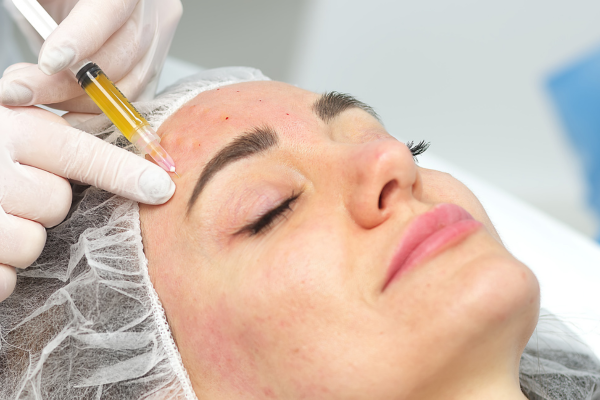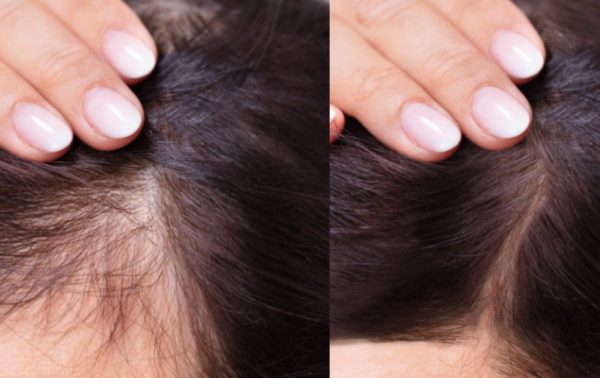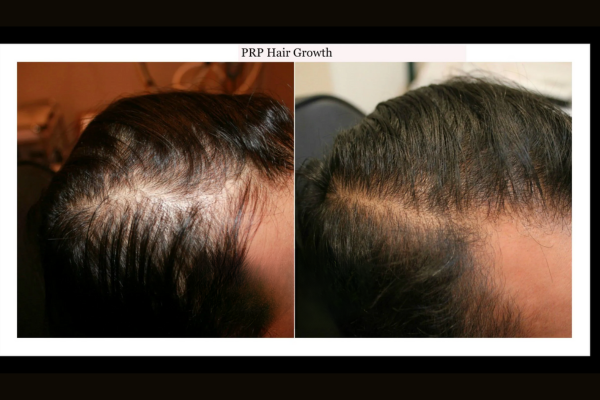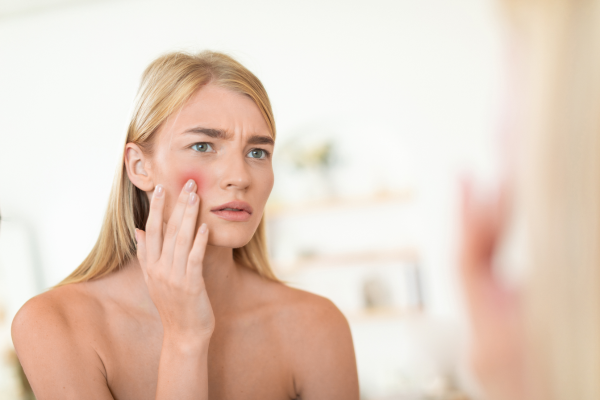
So, you’re dealing with hair loss. It must be frustrating, but you’re not alone. Numerous people worldwide suffer from hair thinning, which not only creates visual issues but also psychological distress.
However, there are some really effective therapies to help you grow back your beautiful mane. Two of the most widely used ones are mesotherapy vs PRP.
Though each has unique advantages and efficiency, it’s normal to wonder which option is the best for you. In this extensive overview, we will examine the details behind mesotherapy vs PRP for hair, their benefits and drawbacks, and how they compare to one another.
Understanding Mesotherapy
Mesotherapy is when a medical professional injects a particular combination of ions into the hair shaft to grant your hair follicles an energy boost.
This nutrient-dense concoction addresses several issues that lead to hair thinning and hair loss, including poor blood circulation, hormonal imbalances, and nutritional inadequacies.
What is the Process Like?
The doctor carefully injects into the middle layer of skin that contains hair glands with fine needles or a specialized meso-gun. Because there is an option to employ numbing agents and the small needles are relatively painless, each session usually lasts around 30 minutes.
On the other hand, an entire course of treatment often entails several sessions—typically eight to ten—spread out over one or two weeks. The frequency and duration of a therapy are determined by the extent of thinning hair, the needs of the patient, and the body’s response to the therapy.
What are Its Benefits?

One of its key advantages is its ability to directly encourage hair renewal by enhancing circulation and nutrition delivery to the hair shafts.
In addition to encouraging hair development, this increased circulation also enhances the strength and texture of hair. Furthermore, mesotherapy can be personalized to match individual requirements, enabling the nutritional mix to be adjusted according to variables such as age, gender, hair type, and personal inadequacies.
Because the process is non-surgical, people with hectic schedules might choose it because of its minimal discomfort, lack of anesthetic requirement, and less of recovery time.
And the Disadvantages?
One significant drawback is that if maintenance sessions are not performed, the effects eventually fade, and the outcomes are frequently transient.
To maintain the benefits, you may need to undergo treatments every few months, which can be time-consuming and expensive. Furthermore, even though mesotherapy is usually safe, there is a slight chance of adverse effects such as slight bruising, swelling, or allergic reactions to the drugs injected. These adverse effects, however, are typically tolerable and transient.
Research published in the Journal of Clinical Images and Medical Case Reports shows that patients who underwent mesotherapy sessions noticed noticeable hair density and health improvements. These findings underscore mesotherapy’s ability as an attractive choice for those pursuing non-invasive hair renewal treatments.
Comprehending Platelet-Rich Plasma (PRP) Therapy
Let’s now discuss platelet-rich plasma or PRP. During the procedure, your blood is extracted and centrifuged to concentrate the platelets—tiny blood components that aid in healing. After that, your aesthetician injects them into the scalp.
To promote hair development, this treatment makes use of the body’s innate healing process. These platelets are loaded with proteins and growth factors that stimulate hair follicle activation, repair damaged tissue more quickly, and regenerate damaged cells.
How It Works

A typical blood draw is the first step in the PRP procedure, and it is comparable to what you would do at a regular doctor’s appointment. Subsequently, the blood is placed inside a centrifuge, a machine that rapidly rotates in order to separate the various elements of blood.
Next, a concentrated plasma layer rich in platelets is carefully injected into the scalp, focusing on places where there appears to be visible hair thinning. Usually, the complete process, including the extraction of blood and the scalp injection, takes sixty minutes.
The Benefits
The safe and natural method of hair renewal offered by PRP therapy is one of its key benefits. The procedure is purely biocompatible because it uses the patient’s blood, which reduces the possibility of allergic responses or unfavorable side effects.
Because the concentrated cells in PRP improve cellular activities and enhance blood flow to the hair glands, it is well recognized to increase production and the volume of hair. Over time, this results in denser, thicker, and healthier hair.
PRP’s non-invasiveness, which enables patients to receive the therapy in an outpatient setting without requiring protracted recuperation times, is another enticing feature.
Cons
However, PRP has its limitations, just like any other treatment. Not everyone should use it, especially if they have underlying medical issues that impair platelet function or if they have severe hair loss.
Although PRP is promising at first, you obtain the best effects from many sessions, usually three to four weeks apart.
Additionally, some people may feel a little pain or discomfort during the process, particularly during scalp injections or blood draws. However, topical numbing medications can usually relieve this.
From a study by the Journal of Investigative Dermatology Symposium Proceeding, after three PRP sessions, patients experienced a significant improvement in hair growth. The study demonstrated PRP’s capacity to enhance hair thickness and density, especially in patients with a prevalent hair loss problem.
Mesotherapy Vs PRP for Hair: Important Distinctions

When contrasting mesotherapy vs PRP for hair loss, it’s essential to realize that while both therapies seek to stop hair loss and promote hair growth, their modes of application vary, making them appropriate for specific patient types.
Mesotherapy addresses root deficiencies that may prevent hair development by directly applying a blend of vital minerals. On the other hand, PRP uses the internal body’s ability to rejuvenate hair follicles, providing a natural way to promote regeneration.
Treatment Frequency and Duration
PRP often requires fewer sessions than mesotherapy. To maintain results, mesotherapy patients usually require 8 to 10 sessions spread out over a few months and follow-up care every few months.
On the other hand, PRP therapy calls for fewer sessions—roughly three to four at first—with maintenance visits suggested once or twice a year. Because of this, PRP might be more practical for people looking for a long-term fix that requires fewer clinic visits.
Cost
Mesotherapy is less expensive per session; depending on the facility and particular nutritional mix, as sessions might cost anywhere between $250 and $500.
On the other hand, over time, the requirement for numerous maintenance sessions may result in cumulative expenses that are on par with or even more significant than PRP. Although PRP sessions initially cost between $500 and $1,500, they require fewer treatments, making it an affordable choice for long-term hair regeneration.
Efficiency and Durability of Results
The effectiveness and durability of the outcomes differ between the two therapies as well. Mesotherapy is particularly beneficial for people with certain vitamin deficiencies or those going through the initial phases of losing hair because it greatly enhances the texture and density of hair.
However, without ongoing care, its effects are transient. Therefore, PRP gives more significant and long-lasting effects because of its direct stimulation of hair follicle regeneration and particularly for those with moderate to severe hair thinning.
Side Effects
Although both therapies have few adverse effects, they are not the same. There is a slight chance of scalp discomfort, mild bruising, or allergic responses with mesotherapy, mainly if the patient is not tolerant of any of the ingredients in the nutrient mix.
Though generally safe, PRP injections may result in temporary swelling, a small headache, or mild discomfort, especially if the scalp is sensitive. Nonetheless, most patients handle both therapies well, with little chance of complications.
Ideal Candidates
Patients looking for a more natural, regenerative approach to hair restoration, particularly those with mild hair thinning and desiring a treatment that leverages their body’s healing mechanisms, are a good fit for PRP.
Selecting Mesotherapy Vs. PRP for Hair Restoration

The choice between Mesotherapy and PRP for hair restoration ultimately comes down to a number of variables, such as the degree of hair loss, financial constraints, individual treatment preferences, and pain threshold.
Severity of Hair Loss
When it comes to treating mild to moderate hair loss, mesotherapy is frequently the preferred option, especially when nutritional deficiencies, hormone imbalances, or stress are the underlying causes. This is because it introduces a variety of essential ions into the scalp to tackle deficiencies that might be causing stunted hair growth.
Over time, the treatment can successfully repair and renew the scalp environment, supporting thicker and better hair growth because these injections are superficial and targeted. Because of this method, mesotherapy is a great option for people looking for a non-intrusive scalp-nourishing treatment for mild hair growth issues.
PRP, however, might be a better option for people experiencing hair loss due to aging, genetic factors, or other complex problems where nutrient deficits are not the primary reason.
PRP frequently yields more noticeable and durable outcomes than mesotherapy because of its capacity to improve blood circulation and stimulate hair glands to enter the active development phase. Thus, PRP may provide the deep rejuvenation your scalp needs if your hair thinning is severe.
Cost
Mesotherapy is a desirable alternative for people on a tight budget because it usually has a reduced session cost.
However, keep in mind that because recurring maintenance sessions are required, the affordability of mesotherapy can be somewhat misleading. Continuous treatments are typically required for mesotherapy to maintain the desired effects, and these might add up over time to equal or surpass the initial PRP costs.
On the other hand, PRP frequently takes fewer treatments to produce and sustain the desired benefits, although being more expensive initially. Long-term savings can be achieved from this, particularly for those who are dedicated to a long-term hair rejuvenation program.
Because PRP tends to have longer-lasting regeneration benefits on hair follicles, the initial payment can be considered as an investment in quality and sustainability, as it lowers the need for follow-up treatments.
PRP can end up being a more cost-effective option in the long run if you’re willing to pay a higher initial cost for a procedure that yields long-lasting results and requires fewer repeat clinic visits.
Individual Preferences
A natural, body-derived method that uses your own blood to harness growth factors without adding artificial ingredients is why some people are drawn to PRP. This is appealing to those who value therapies that closely match the biology of their bodies, especially if they are hesitant to add foreign substances into their systems.
However, mesotherapy appeals to people who wish to quickly infuse their scalp with vital nutrients and see more noticeable, instantaneous benefits in their hair condition.
In addition, mesotherapy is well-liked by those seeking to address thinning hair and improve the general wellness of the scalp due to its ability to deliver specific results through carefully blended essential ions.
This method provides a notable improvement in hair structure and vigor rather quickly, which makes it a desirable option for people looking for both noticeable cosmetic benefits and preventive maintenance.
Tolerance for Pain

Another aspect of Mesotherapy VS PRP: Your ability to tolerate pain may also play a role in which treatment you choose from these two. Mesotherapy uses small needles to give shallow injections that usually cause little discomfort. Most patients find that the injection procedure is rapid and that any discomfort they feel is usually moderate and transient, making it well-tolerated.
One of the main reasons people who are afraid of intrusive treatments or have a lower pain threshold choose mesotherapy is because of its moderate nature.
In contrast, PRP may cause a little bit more discomfort because of the way it works—it entails drawing blood and then injecting it deeper into the scalp. Although the idea of extracting blood and injecting it again could seem scary, it’s crucial to remember that PRP is carried out with the use of numbing creams and, occasionally, local anesthetics to reduce discomfort.
Although most patients describe the feeling as more of a pinch than pure pain, this discomfort might be an issue for people who are extremely sensitive to injections. However, the more significant and long-lasting benefits that PRP offers surpass the modest increase in discomfort.
Bottom Line
Ultimately, what matters most in the argument between mesotherapy vs PRP for hair loss is personal needs, preferences, and the underlying causes of hair loss. The focused nutrient delivery provided by mesotherapy presents a great choice for individuals seeking to address deficiencies and enhance the general health of their scalp. Many patients may afford it because of its customizable nature and comparatively inexpensive cost per session, especially those who are just starting their hair rejuvenation journey.
PRP offers a more regenerative approach by utilizing the body’s inherent growth factors, which makes it ideal for people with moderate to severe hair thinning. For many people, the longer-lasting results it provides in fewer sessions may make up for the higher initial expense. Future developments in PRP have even greater promise, as evidenced by the development of super-concentrated formulations and stem cell upgrades.
So, the decision between PRP and mesotherapy, or even a mix of the two, should ultimately be made after a careful consultation with a medical specialist. To attain optimal results, a customized treatment strategy that is suited to your unique hair-thinning problem is essential.
Learn About Diaminy’s High-Quality Mesotherapy Equipment for the Best Results!
The first step in taking charge of your hair rejuvenation journey is selecting the appropriate treatment. It all comes down to figuring out what works best for you, whether you like the potent regeneration effects of PRP or the nutrient-rich boost of mesotherapy.
To get the greatest results, having the correct gear is also crucial for anyone thinking about mesotherapy.
After we learn about Mesotherapy VS PRP, Diaminy provides top-notch mesotherapy equipment so you may perform accurate, efficient treatments from the comfort of your home or office. When it comes to your hair restoration requirements, don’t settle for anything less than Diaminy—the best Mesotherapy equipment brand trusted by experts worldwide.
Get started on the path to longer, healthier hair right now. Explore our selection of mesotherapy needles to see the difference for yourself.
